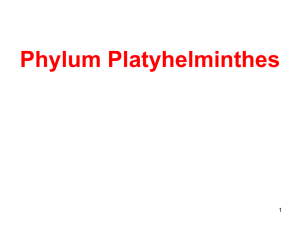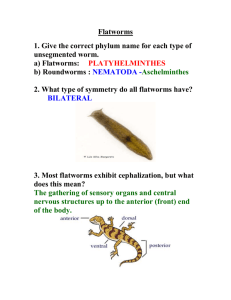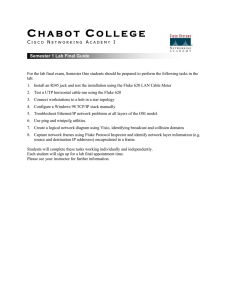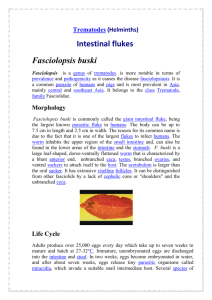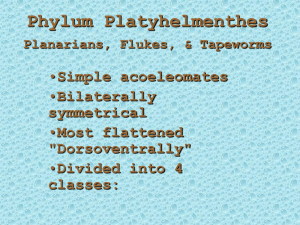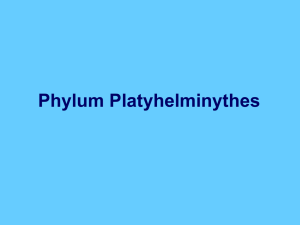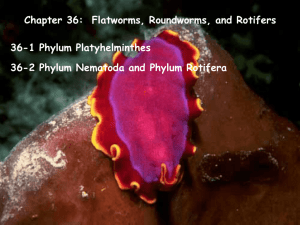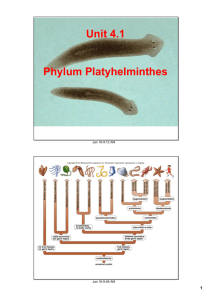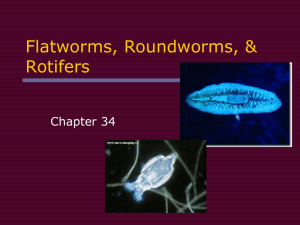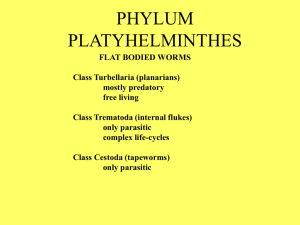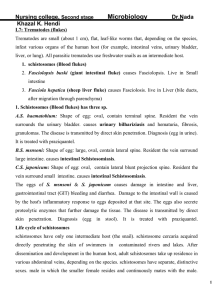34-1 Phylum Platyhelminthes
advertisement
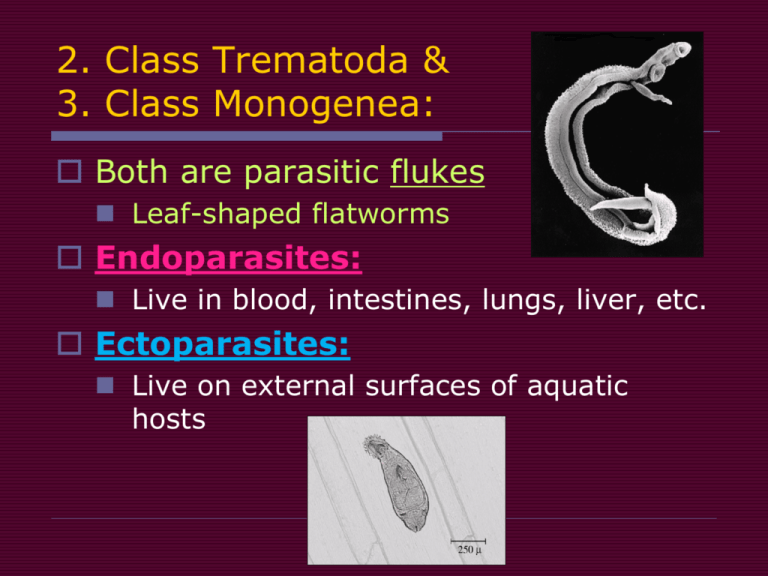
2. Class Trematoda & 3. Class Monogenea: Both are parasitic flukes Leaf-shaped flatworms Endoparasites: Live in blood, intestines, lungs, liver, etc. Ectoparasites: Live on external surfaces of aquatic hosts Structure of Flukes Anterior & ventral suckers for attachment to host Nervous system like planarian Except NO eyespots Tegument – outer layer that protects from host’s immune and digestive system Liver fluke Reproduction of flukes: Most are hermaphroditic May release 10,000+ eggs at a time! Complicated life cycle (p. 692) Life Cycle: Primary host: adult parasite gets nourishment from this host Sexual reproduction Intermediate host: larvae derive nourishment here Asexual reproduction Fluke Diseases in Humans Swimmer’s itch: minor skin irritation and swelling Small brown fluke in lakes (in Ohio) Dies within skin because humans are not ideal hosts Schistomiasis (blood fluke): disease that causes tissue damage, bleeding, tissue decay and possible death Lungs, intestine, bladder, & liver 200 million people affected worldwide Schistosoma Animation! Secondary or Intermediate host • snail Primary host • human Swimmer’s itch 4. Class Cestoda 5,000 species of tapeworms Can live in intestines of most vertebrates Enter through undercooked food with eggs or larvae (cyst) Symptoms of infection: Digestive problems Weight loss Lack of energy anemia Structure: Tegument to protect from host Also absorbs nutrients from host Scolex: knob-shaped organ with hooks and suckers to attach to host Proglottids: body sections after a short neck Up to 2,000 per tapeworm! Reproduction: Hermaphrodites Each proglottid has ovaries and testes Filled with 100,000+ eggs each! Eggs fertilized by sperm of different proglottid Life Cycle: Cysts: dormant larvae surrounded by protective covering in animal muscle
